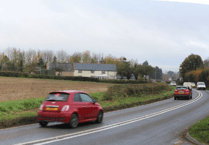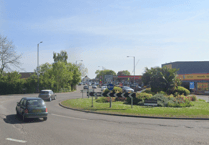FRESH plans have been submitted to build housing on a controversial derelict Wellington mill site.
Permission was given in 2020 for demolition of Haymans Mill, in Westford, Rockwell Green, with eight houses to be built.
But the development, which attracted dozens of objections from local residents, was never started and the consent later lapsed.

Previous permissions dating to 2006 allowed conversion of the mill for 14 flats or 21 two-bedroom apartments, respectively.
Now, applicant Terry Hosier, director of three Bristol-based property companies, is trying again with a new plan which would see an extra house squeezed onto the half-acre site, totalling nine three-bedroom family homes.
Planning agent Stuart Rackham, of Rackham Planning, said: “Each house will have a dedicated garden area, car parking, cycle storage, and refuse storage.
“There will also be visitor parking and cycle parking.”

Mr Rackham said what was left of the mill building was in a state of ‘complete dilapidation’ with no roof, windows, or functioning access.
A hardstanding area left derelict for more than 10 years had become overgrown with low quality weeds, shrubs, and self-seeded trees of various species and sizes.
Mr Rackham said the new houses would be finished in traditional brick and designed to reflect the character and appearance of existing dwellings, particularly the Westford Grange development on the other side of Rackfield.
He said the principle of demolition and developing residential housing on the site was acceptable because of the earlier permissions.

Mr Rackham said Somerset-based developer PYL now wanted to build out the planning permission once granted and secure additional housing on the brownfield site.
He said the proposal to redevelop the brownfield parcel of previously developed land to provide new homes came at a time when there was a clear need for more housing in the region while making efficient use of sites.
The 19th century water-powered textile mill was associated with the former company W and T Elworthy and is the remnant of a much larger industrial complex.
It was most recently used for a coal merchants, which ceased in about 2003, and is recognised as an ‘undesignated heritage asset’.





Comments
This article has no comments yet. Be the first to leave a comment.